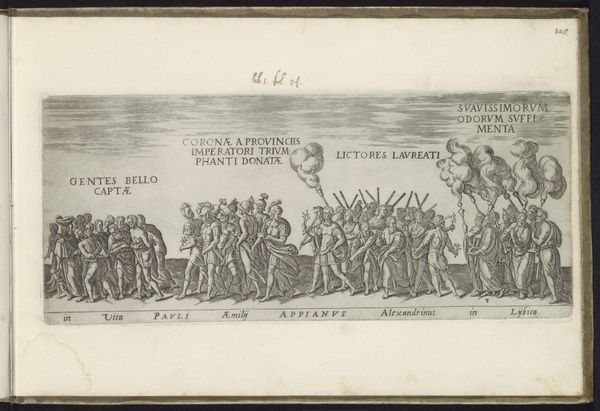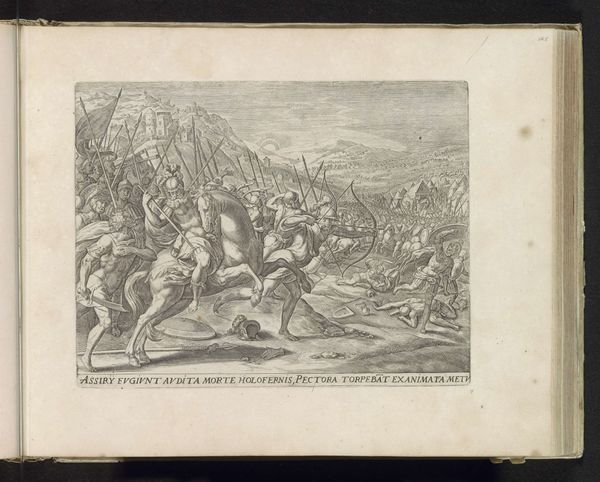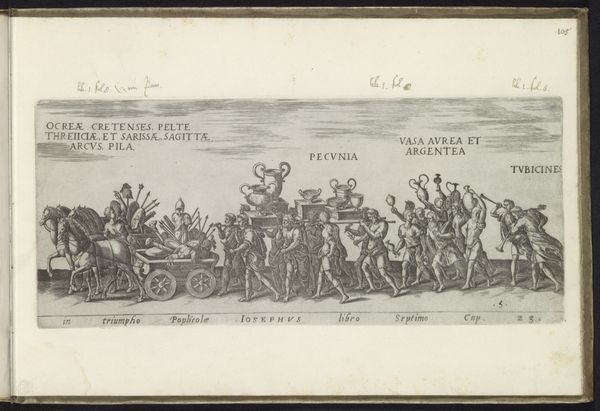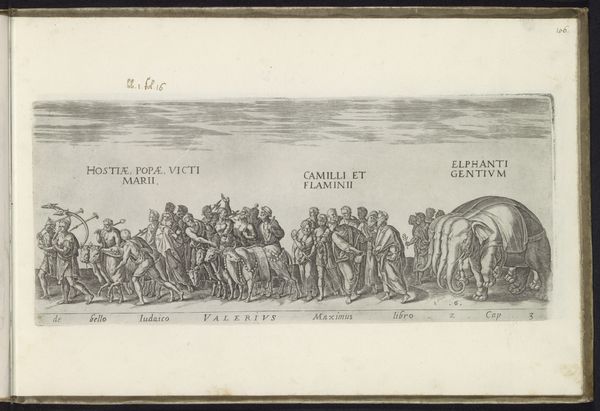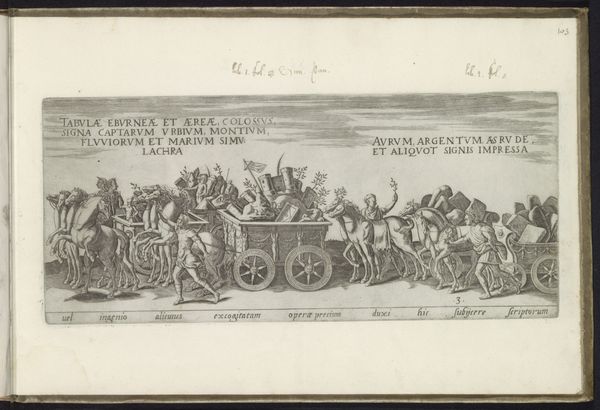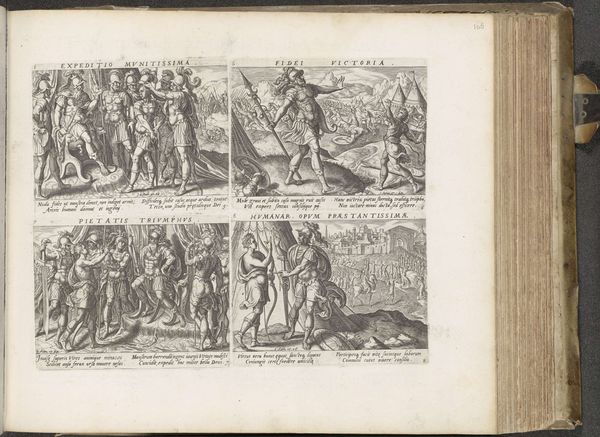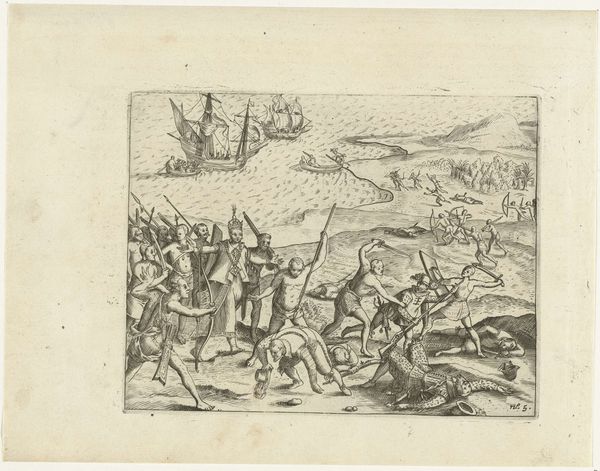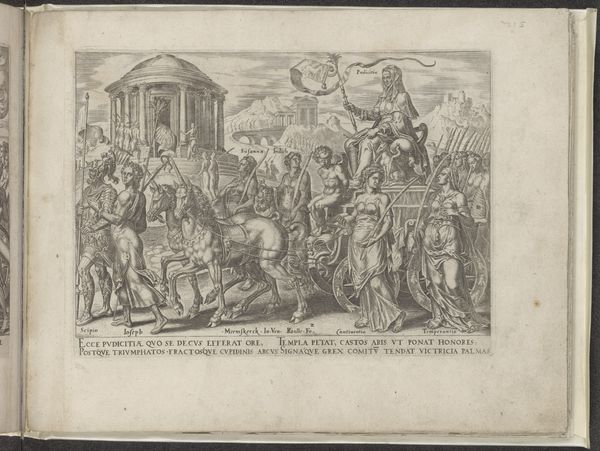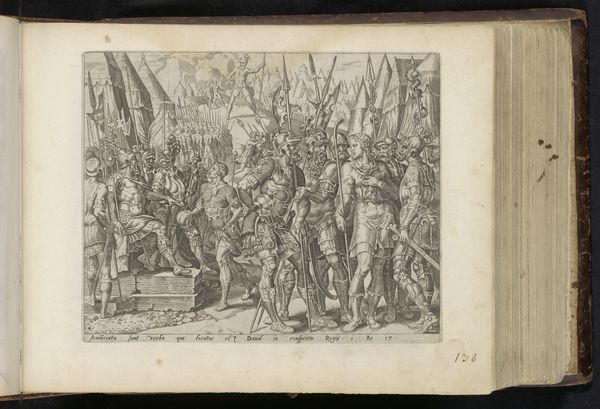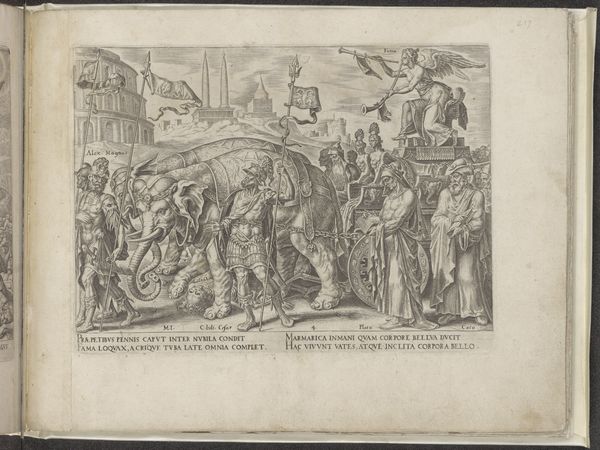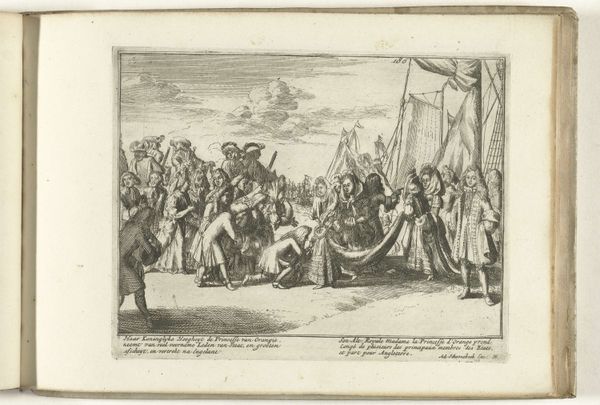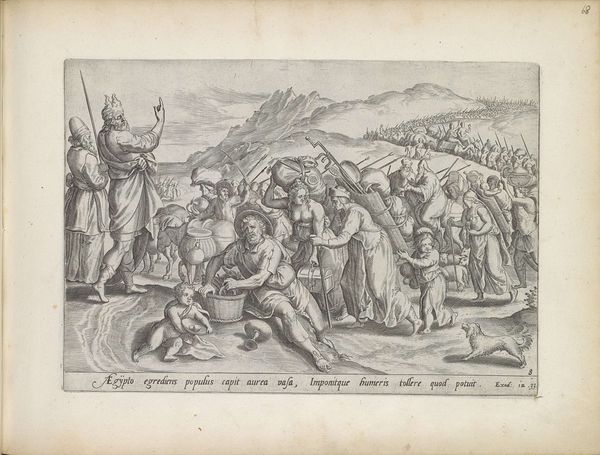
drawing, print, ink, pen, engraving
#
drawing
#
ink drawing
#
pen drawing
# print
#
pen illustration
#
pen sketch
#
11_renaissance
#
ink
#
pen
#
history-painting
#
engraving
Dimensions: height 156 mm, width 360 mm
Copyright: Rijks Museum: Open Domain
Curator: I’m struck by the energy in this print, even rendered in the spare lines of pen and ink. It pulses with the swagger of conquest. Editor: That’s a visceral reaction I understand, given how triumphal processions were powerful displays of Roman power and imperial reach, a complex choreography of subjugation and enforced compliance. Curator: Exactly! We're looking at "Triumph procession with soldiers and ministers," created around 1618, a work attributed to Onofrio Panvinio. It is rendered using engraving techniques and a combination of pen and ink. Editor: I see potent symbolism at play here. Notice the figures on horseback; they seem to represent the might of the military and echo enduring iconographies of Roman power and expansion. Consider their implications during the historical context when this print was made; perhaps reflecting back at a specific victory but also tapping into familiar symbols for its own ideological reasons. Curator: Absolutely, the procession itself becomes a theatrical production meant to affirm hierarchical power. Note that there are some individuals appearing to cheer. It’s vital to acknowledge how victory parades often masked brutal realities. How is civilian life being upheld? Whose voices are elevated? It is never as straightforward as we think, I imagine the power of an engraving at this time. Imagine it widely distributed… Editor: The flags, the armaments, all serve a crucial function—they aren’t merely decorative; they amplify the spectacle's narrative. Each element acts as a signifier that communicates clear messages about political strength and martial dominance. It is all orchestrated for impact. Curator: That orchestration raises further questions: Who funded this parade? Who benefits politically from the image's dissemination, both during and after the depicted event? Editor: Indeed. The use of classic imagery ensures the message resonates over time, beyond its initial context. Curator: Which challenges the contemporary viewer to question these constructed histories, always asking who is excluded, who is harmed, and what enduring narratives this symbolism supports. Editor: And so it goes, these emblems of dominance, endlessly echoing, re-interpreted, their origins buried under layers of accrued cultural meaning. Curator: Well, by engaging with their complicated symbolic function and challenging their presumed neutrality, we hope to incite more awareness. Editor: It certainly makes me think more carefully about the persistence of symbols.
Comments
No comments
Be the first to comment and join the conversation on the ultimate creative platform.
